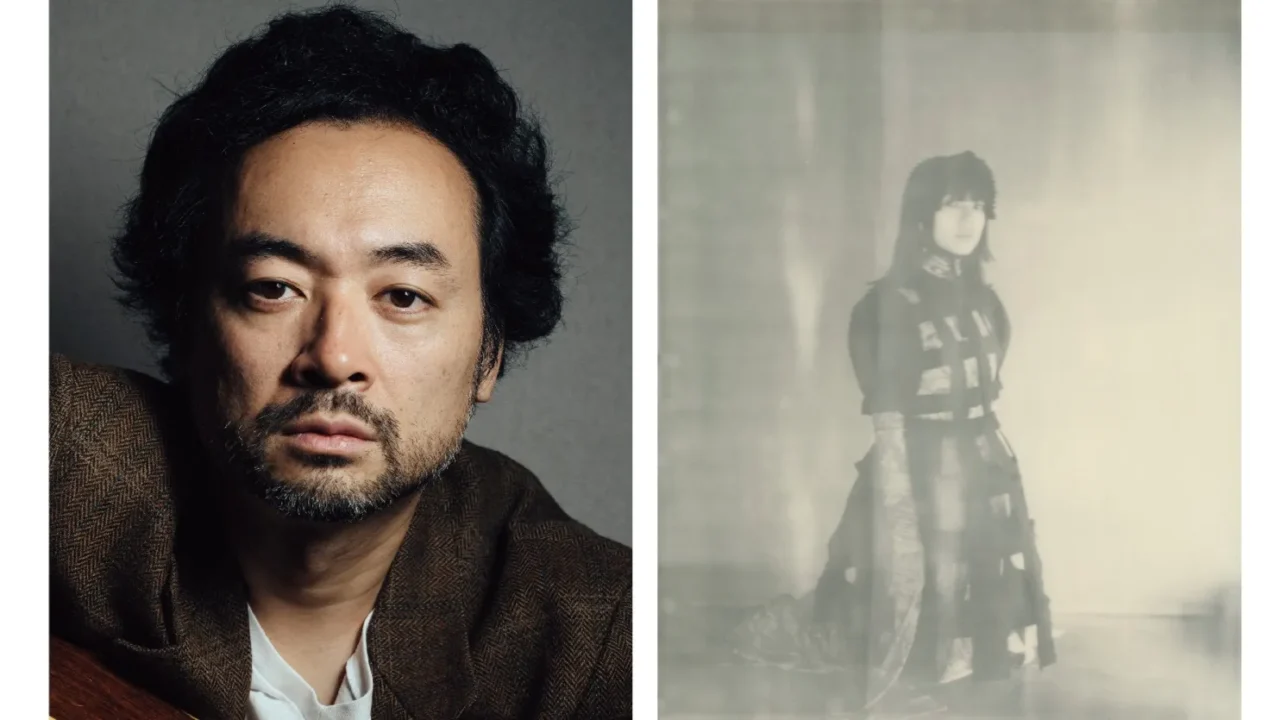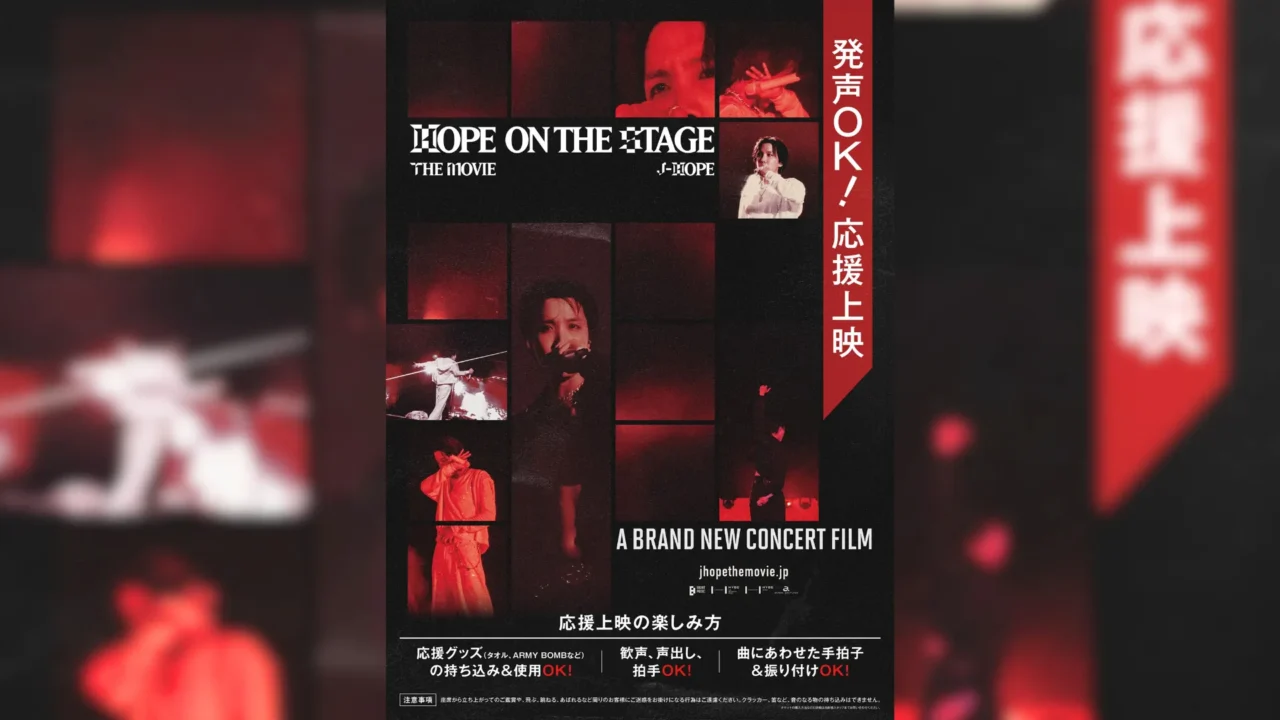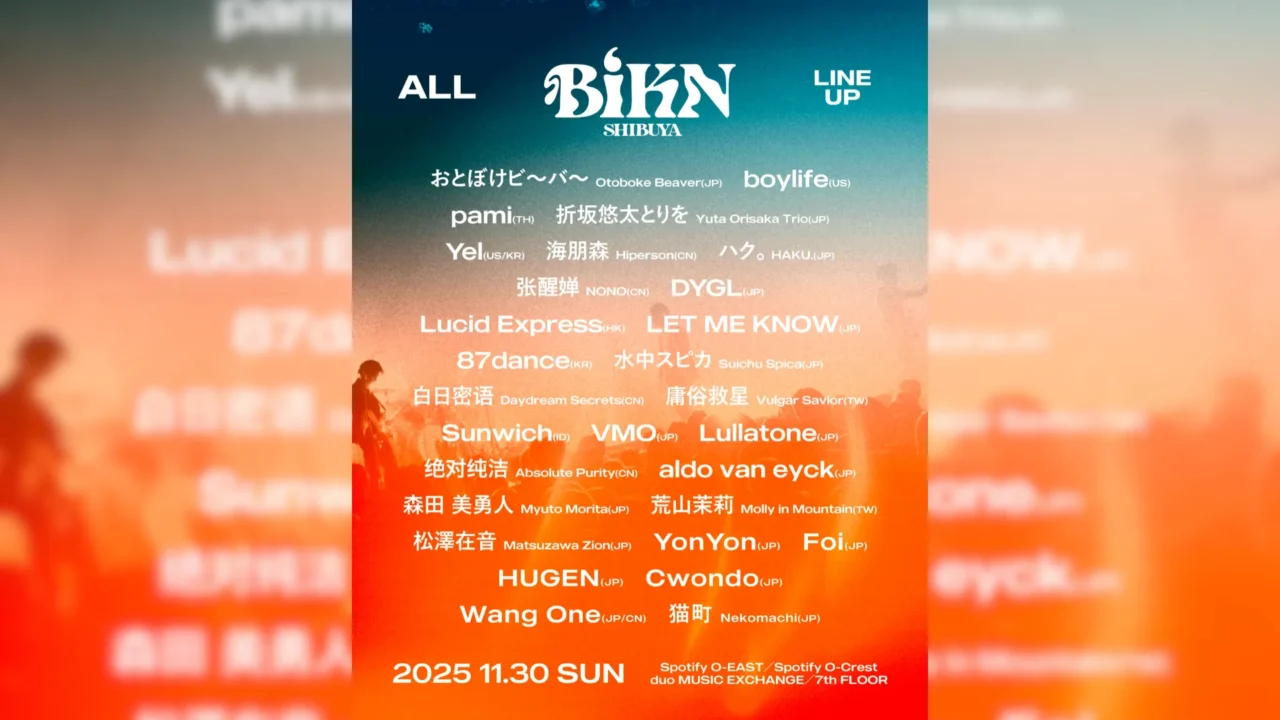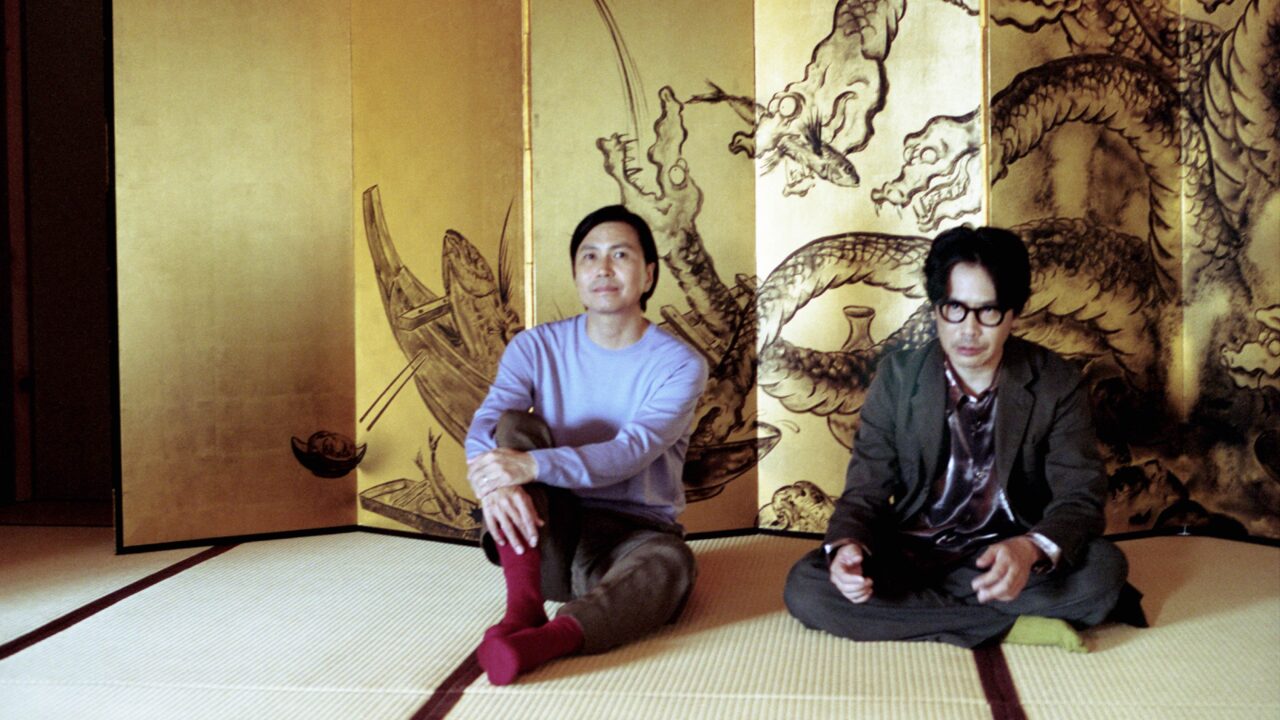“I hope to work with like-minded people and possibly create a new culture with them,” says Ryuhei Oomaru, the founder of New York-based Japanese fashion brand OVERCOAT. “It was only a pair of clothes when starting out, but I would love to see it expand onto culture or briefs and go down in history,” he beams.
The Fukuoka-born designer also runs his design company Oomaruseisakusho2 and is the guy the whole New York fashion industry turns to.
Designed speech suits for the former first lady Michelle Obama and the current vice president Kamala Harris in America. He’s well-connected in the industry in America. And he was the first Japanese designer to win CFDA FASHION MANUFACTURING INITIATIVE in 2014, the award aimed to celebrate excellence in fashion design in New York. He’s also close to Peter Miles, the art director widely recognized for the logo and packaging brands such as Celine or Marc Jacobs.
Oomaru says he’s having the busiest life ever. NiEW spoke to the prominent designer about how he built such a steady role in the world’s best fashion industry, inheriting the techniques and the future of luxury brands.
INDEX
The reason the fashion industry relies on him
– Could you explain your current role in the fashion industry in New York?
Oomaru: I think we are like a good advisor for fashion designers and creators. There are many sewing factories and pattern companies in New York, but they are not so interested in what PRADA did this season, for example. Many sewing factories have excellent skills but do not understand mode and trends, and they are distant from designers. Even at well-known fashion colleges, there are far more students majoring in PR and marketing classes than in making things. When this happens, for example, when an influencer who does not know much about making clothes wants to start a brand, the conversation between planning and manufacturing does not go well. So I come in as a consultant, listen to what they want, and actually make my own samples to suggest what they might like.
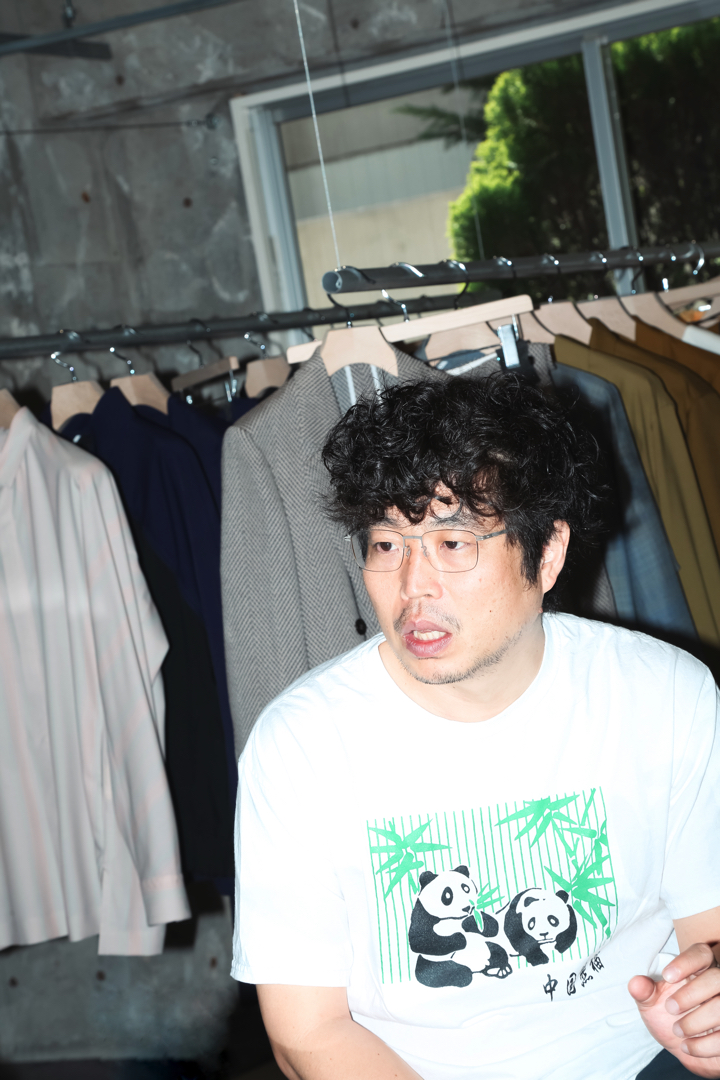
Born in Fukuoka in 1977. After building a career at a Japanese maison brand, he moved to the U.S. in 2006 and established Oomaruseisakusho 2 in 2008. In 2015, he launched his own brand, OVERCOAT. In 2014, he was the first Japanese to win the 2nd CFDA FASHION MANUFACTURING INITIATIVE, an award for manufacturers working in New York, and in 2015, he won the Amiko Kujiraoka Award at the 33rd Mainichi Fashion Grand Prix.
https://overcoatnyc.com/
– From designing to producing, it seems that you seem to be one of the few companies that operate the whole process.
Oomaru: I haven’t looked into it, but I think there are very few. In my case, I quit high school when I was 16 years old. The day I decided to make clothes, I went to Kinokuniya bookstore to buy a book on western clothing and started making clothes at home. I thought about what I wanted to make, drew a pattern, cut, and sewed. My skill is to be able to consistently carry out this process of making clothes, and this is the foundation of Oomaruseisakusho 2 today. This skill may seem obvious, but the manufacturing sector in the apparel industry is roughly divided into a detailed division of labor between planning and design, pattern, sewing, and fabric shop, so there were actually few places that had skills like ours. With this type of business, we are able to incorporate the client’s intentions into the desired form as quickly as possible. I believe this is the reason why the industry trusts us so much.
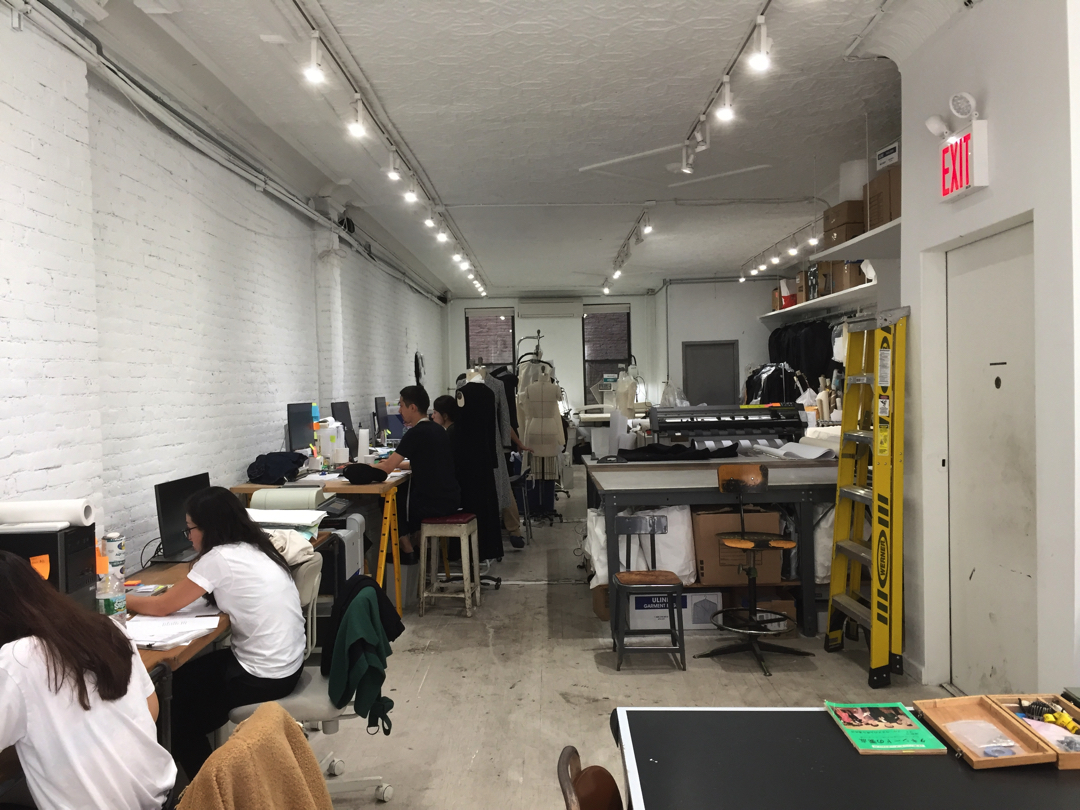
– This style might require a lot of knowledge to operate the whole process.
Oomaru: In terms of man-hours, it would be about the same as learning 99 twice (laughs). (Laughs) I think the starting point where I first recognized “this is what making clothes is all about” was different from other people. I was born and raised in Fukuoka at a time when there was no Internet. I bought books on dressmaking as if I was going to buy a cookbook, and I just learned how to make clothes by looking at the books. But in the apparel industry, each process was so divided that it was difficult to communicate smoothly. I consider myself such a sewing factory manager. I feel the real thrill of making clothes in the sewing process of creating a three-dimensional object out of a flat surface.
INDEX
Moving to New York was a nightmare. But He earned recognition from Phillip Lim and Thom Browne
– Initially, you self-learned and that led you to this position to overview the New York’s fashion scene. However, I heard you couldn’t get a visa through a company you were supposed to work for when you first came to New York.
Oomaru: After learning dressmaking skills on my own, I entered Bunka Fashion College, and after graduation I worked as a patterner for six years for a Japanese maison brand that also participated in the Paris Collection. After leaving that company, I was working freelance when I was headhunted by a luxury brand in New York, and that is how I ended up in New York. However, due to the 9/11 terrorist attacks, I was denied a visa and had to move out of my house in Tokyo, so I had no choice but to move into an apartment in Brooklyn shared by three Asians, and that was my starting point in New York.

Oomaru: At the time, I didn’t know anyone and didn’t speak English. One of them told me, “A girl I know who just graduated from fashion school wants you to make her clothes.” I decided to give it a try because I had some free time, so I bought a $99 sewing machine and a ruler at a supermarket called K-Mart and made some clothes for her. I bought a $99 sewing machine and a ruler at a supermarket called Kmart and made some clothes and gave them to him. He was surprised at the quality of the clothes and asked me to make him another dress, and then he introduced me to someone else, and so the chain of events began. I am still working with many of the people I met at that time. This chain of events has only continued for 15 years, and thankfully I have never gone into business for myself.
– That sounds like a movie story. What was the communication like with them?
Oomaru: Sometimes I would make them exactly as they wanted, but as I got used to it, I would often tell them, “That’s not business because you can’t wear that normally. Haute couture is fine, but if you don’t make something that can be sold on a different axis, you won’t have a business. Some of our clients are like making outfits for Lady Gaga, “Who would wear that?” Some of our clients are apparel brands that make outfits for Lady Gaga. But if that’s the case, I sometimes advise them to turn their focus in that direction, and not to do things halfway.

Oomaru: After all, it’s not ready-to-wear clothes if you can’t wear it normally. Clothes for the Met Gala or a special ceremony for a politician should be made so that the person can shine on the spot, but if they are mass-produced and sold, they must look cool for each customer who buys them. We are also an organization, so if they don’t sell, we won’t be able to sustain ourselves. I think it is my role to help them sell quickly.
– That was how you built your connection and earned trust in the industry. You still seem to have been very busy.
Oomaru: Yes, I am.This is probably the busiest time in my life. Corona has settled down, the industry is full of motivation, and I have many requests. We are also looking for new colleagues, so if you are interested, please contact us.

INDEX
Developing the inherited techniques for the next generation
– You’ve worked with various brands in New York. What kind of companies or brands would you like to collaborate with in the future?
Oomaru: I would like to work with people who have similar aspirations. Hopefully, I can create a new culture with them. We are starting with a single piece of clothing, but I think it would be interesting if it gradually becomes a culture or an idea that is passed down to future generations.
For example, the SDGs are a very important theme these days, but it is a matter of course for those who make things. It is just like a mother saying, “You have to make a meal without wasting the leftovers in the refrigerator. It is natural for people to wear their clothes for a long time and to pass on their skills. I would feel bad if something I made was thrown away in front of my eyes. And since the earth is not that logical, it is not realistic to try to achieve all the contents of the SDGs. But it is meaningful to set goals and work toward them. In that sense, I would like to work together with a company that is not only interested in the SDGs on the surface, but also in the essence of pursuing its own sustainability, because we have similar aspirations.

– That’s why one of your focuses is to maintain a relationship with Japanese sewing factories.
Oomaru:My company has two businesses. Oomaruseisakusho 2 is engaged in consulting, patternmaking, design planning, sample production, and other contract work in clothing manufacturing in New York. OVERCOAT, on the other hand, is a D2C business, which plans and designs in New York and mass-produces and sells them in Japan.
In tailoring, the way of making clothes in Made in Italy and Savile Row in England are different from each other, and in our case, we have inherited the Japanese way of making clothes. People say we are self-taught, but at least we have authors of books, and we follow their knowledge and history. And I also think it is my role to connect that to the next. People often talk about passing on skills, but unless we not only pass them on but also develop them, they will not essentially lead to the next step. In OVERCOAT, we dare to say “MADE BY JAPAN” instead of “MADE IN,” and we would like to pursue manufacturing that inherits and develops technology.
– Some other Japanese domestic brands could also call themselves as “made by Japan,” what do you think makes OVERCOAT stand out among them?
Oomaru: Clothing is a culture that came from the West, and I believe that Japanese people interpret the history created by Westerners in a somewhat misaligned way. The reverse is also true. For example, when an Englishman learns to dress in Kyoto and wears a kimono by himself, the balance, colors, and patterns are different, or when a painting by Korin Ogata is displayed under fluorescent lights at the Metropolitan Museum of Art. In the case of OVERCOAT, I feel that the use of Japanese sewing techniques and the creation of clothes based on the New York culture, as well as the individuality and development that naturally arise from cultural discrepancies, are the key to the success of OVERCOAT. I believe that the developmental potential of OVERCOAT lies in the fact that it uses Japanese sewing techniques and makes clothes based on New York culture.
INDEX
Themed as BEACH × TAILORING for 2023 SS, in a collaboration with Peter Miles
– Even subtle differences could contribute to bigger changes in terms of how things look. Even the same design would provide different impressions in different countries. Could you tell us about the 2023 SS collection?


Oomaru: The theme of the 2023 SPRING SUMMER collection is “BEACH × TAILORING”, inspired by minority cultures in Africa and Central and South America, as in the 2022SS collection. The design is based on earth colors such as sand, and is intended to be worn over a swimsuit at the beach. We also used fluffy toweling fabrics and produced polo shirts made from knit saws (clothing made by cutting knitted fabrics). We also expressed a python pattern in herringbone and incorporated it into a set-up.

Oomaru: Then there are jackets. Normally, a jacket like this would have pockets on top of the fabric, but this jacket has pockets on the inside, sewn from the top, and darted.
The concept of the brand in terms of pattern is “to conform to the body regardless of who wears it by sloping the shoulders. 7 billion people have 7 billion different body shapes, and prêt-à-porter does not seem to fit everyone’s body shape. Therefore, we believe that if there is a part of the body that fits the body, the fit will change, and the most important part of OVERCOAT’s clothes is the shoulder. By having the clothes sit nicely on the shoulders, they feel lightweight and look fitted to any body type.
The first coat we made was this one, which can be adjusted by the slope of the shoulder by adding pleats at the shoulder line. These pleats open and close so that they always ride flush with the shoulders and the rest of the fabric falls nicely. The latest one brought the darts behind the shoulder line.


Oomaru: The shirts are made of yarn-dyed fabric, which looks strangely monochromatic from a distance, but upon closer inspection is striped. I am also friends with a graphic designer named Peter Miles, with whom I have collaborated on various projects. This season, Peter was amused by my photographs of walls in New York and incorporated the designs into his clothes.

INDEX
Doubting what’s considered as good and find your own value
– The series of collaborations with Peter Miles is remarkable. What was it like working with him, and what do you respect about him?
Oomaru: Peter’s ability to sublimate humor into beauty always amazes me. His output is as natural as if it had always been that way, but it also has a very calculated and sharp edge, which I feel is his talent or sense of style.
– How would you define having a “good taste”?
Oomaru: I think it means being able to have fun even when unexpected things happen. Things often do not go as planned, but it is important to be able to go back from 0 to 1, look at things in a flat way, and extract the interesting parts. I think people who can do that have good taste, and people who just get depressed when things don’t go well don’t have good taste.
As for things, I am attracted to things that are somehow out of tune with what is considered good by the public. Personally, I am attracted to sneakers that are covered with dust in a store in a deserted shopping street. Of course, not everything is attractive. Things are very dry, so I think it is important to be able to separate facts and feelings and judge whether something is beautiful or not based on your own sense of beauty.
– What advice would you give to companies that wish to be like yours with their own taste while being global?
Oomaru: As with the previous question, I think it is important to have the ability to think on the spur of the moment, because everything often does not go the way you want it to go.

– Is it something you can learn to gain?
Oomaru: No, it is not. I think it is more like forgetting what you have learned. I think the essential thing is to understand basic dressmaking and then discard everything you have learned. For example, you don’t remember everything that came out of the restaurant you went to on your anniversary, but the thing that suddenly popped into your head, “I ate that at that time,” is the thing that really moved you. Today, there is so much information that it is difficult to find the essential things, but that is why I think it is important to let go and forget.
– You’ve worked with many renowned New York’s luxury brands people admire. Where do you see those brands in the future?
Oomaru: For example, a sweater made by a mother has a strong feeling on the maker’s side, and no matter how beautifully we make it, it cannot be fulfilled; I think it is the ultimate luxury. I don’t know how to achieve such a thing, but I feel that the closer we get to that side, the more luxurious it becomes.

Oomaru: That is one of the reasons why we opened our Tokyo atelier last November. We don’t have an iron here just for show, but our staff really make clothes in this space. This display-like glass desk is also used as a workbench. I think that is the kind of luxury that is not for show.
– Do you have any plans for the future?
Oomaru: In the future, we would like to scale up both in scale and expertise, while maintaining the identity of the brand with the right partners. By “the right partner,” I mean a partner who understands Oomaruseisakusho 2, not just its superficial aspects, and with whom we can mutually improve.
『OVERCOAT TOKYO POP-UP STORE OPENING FEBRUARY 24TH』
OVERCOAT TOKYO in Minami Aoyama, Tokyo, is currently holding a pop-up store where you can try on and purchase the 2023SS collection.
Dates: Open – June 25 (Sun.)
Location: OVERCOAT TOKYO
Address: Kaneko Bldg. 2F, 4-9-28 Minami-Aoyama, Minato-ku, Tokyo
Hours: 13:00 – 19:00 (Open throughout the period)
*In case of any changes in business information, it will be announced on OVERCOAT’s Instagram.
Inquiries: info@overcoatnyc.com













